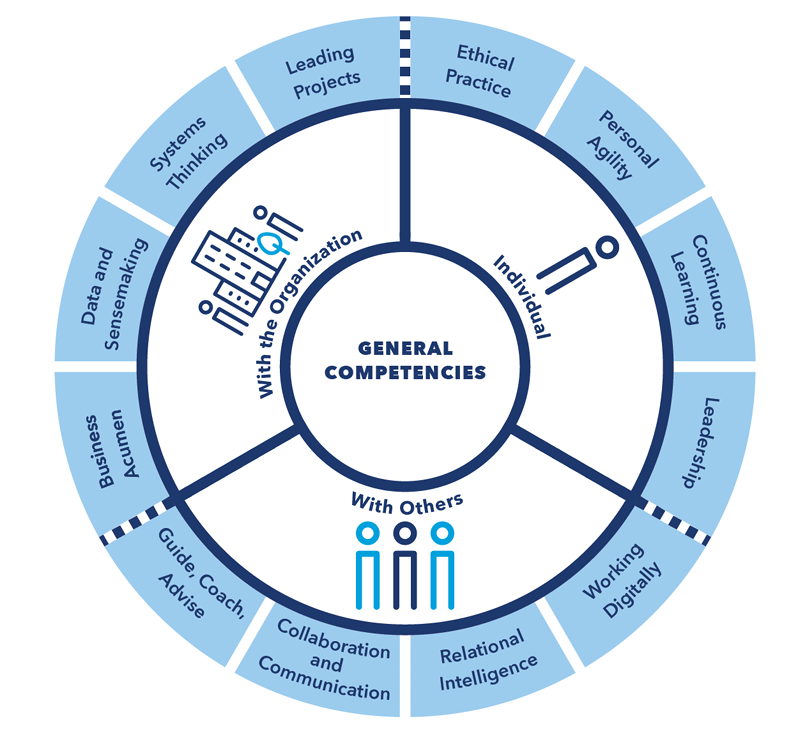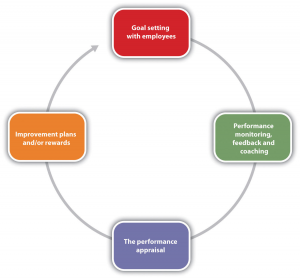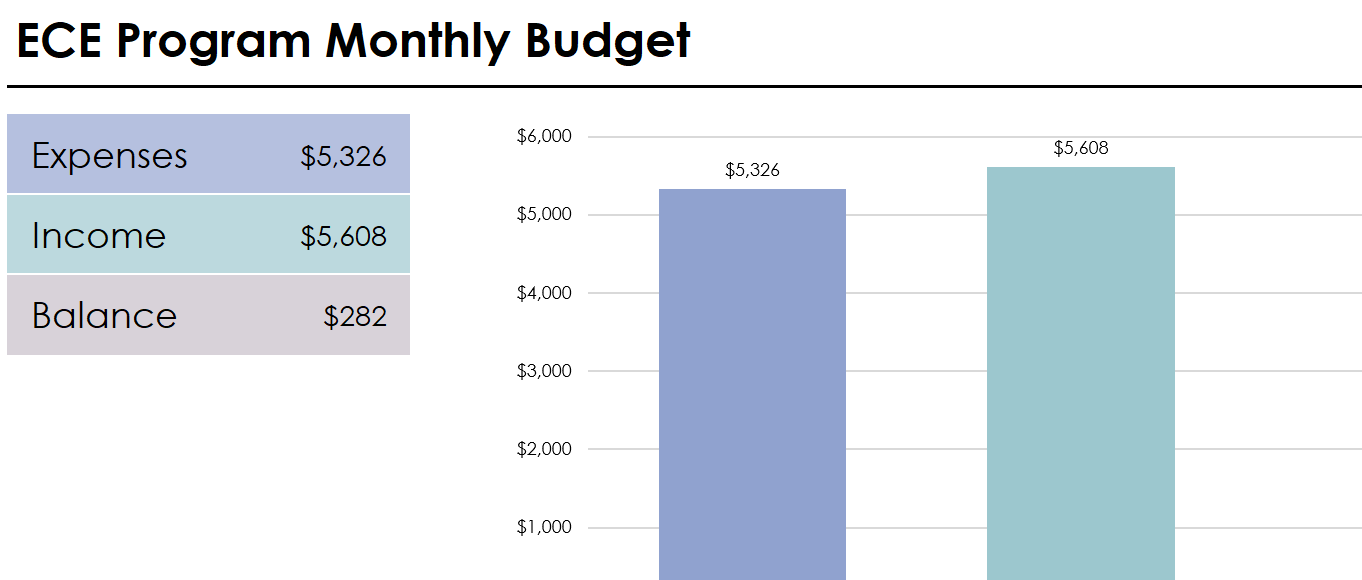Activity 1.2 | Managing and Leading in the ECE sector
| Site: | RRU Open Educational Resources |
| Course: | Leading and Innovating in the Early Childhood Education Sector |
| Book: | Activity 1.2 | Managing and Leading in the ECE sector |
| Printed by: | Guest user |
| Date: | Sunday, 7 December 2025, 7:08 AM |
Activity 1.2 | Overview
Activity 1.2 | Managing and leading in the ECE sector
This activity introduces you to essential business practices to support sustainable programming, such as (1) Classification, regulatory compliance and licensing, 2) Human Resource Management (HRM), and (3) Financial management.
After completing the various learning events within Activity 1.2, you will be able to:
- Explain the principles and processes required to support the operation of a quality, sustainable ECE program with well-cared-for ECE staff.
- Reading
- Watching Videos
- Self-reflections
- Quizzing (immediate feedback)
- Accessing optional resources to support ECE business management practices
Classification, Regulatory Compliance and Licensing

National Classification
As an ECE manager, awareness of the National classification of your role is critical for several reasons.Reflect on how the elements presented in the following table impact you as an ECE manager and leader:
| Legal Compliance | Compliance with labour laws, regulations, and reporting requirements |
|---|---|
| HR Management | Recruitment, evaluation and performance management, facilitating organizational structure and culture |
| Financial Management | Resource allocation and budgeting decisions |
National Classification and Licensing

The Government of Canada classifies all national occupations.
Early Childhood Educators are classified within unit #42202, "Early childhood educators and assistants."
According to this classification:
The two primary types of programming where ECE management and leadership are required are (1) licensed programs and (2) registered license-not-required programs.
Once again, here are the descriptions of these two primary types of childcare as defined in BC:
1. Licensed child care facilities
Licensed childcare facilities are monitored and regularly inspected by regional health authorities. They must meet specific requirements for health and safety, staffing qualifications, record keeping, space and equipment, child-to-staff ratios, and programming.
2. Registered license-not-required
These are unlicensed care providers. They must have registered with a Child Care Resource and Referral Centre. To register, operators must have completed:
- Criminal record checks (for everyone over age 12 living in the home)
- Character references
- A home safety assessment
- First aid training
- Childcare training courses or workshops
Registered care providers also have access to support, training, resources and group liability insurance.
As an ECE manager in British Columbia, you are classified nationally and provincially and are expected to adhere to all associated regulations and policies.On the following page, you will test your knowledge of basic regulations and policies.
Quiz
National job classification and ECE licensing
Human Resource Management (HRM)

As an ECE manager, you are responsible for various Human Resource Management (HRM) aspects including:
- Recruiting and hiring qualified staff
- Training and Professional Development (PD)
- Performance evaluations and management
- Employee relations
- Supporting the wellbeing of staff and a positive work culture
- Communication and conflict resolution
Understanding the competencies outlined by the Chartered Professionals in Human Resources Canada's (CPHR) general competency framework (CPHR, 2022) can help you identify growth opportunities, set goals, and, overall, help you become a self-aware manager and leader. The General Competencies include capabilities that an HR professional should possess to operate successfully in their professional practice and are not specific to the HR profession.
The CPHR has categorized these skills into 12 General Competency Areas. Examine the competencies presented and consider the areas where you have strengths and the areas that might need development.

Note. The Chartered Professionals in Human Resources Canada Competencies Framework
Consider:
- Which skills have you utilized to contribute to a healthy, collaborative workplace environment? How have you used these skills?
- What ongoing learning and skill development opportunities might enhance or support your leadership role?
Reference
The Chartered Professionals in Human Resources Canada (2022). General Competency Framework. https://cphr.ca/wp-content/uploads/2023/02/CPHR-Competency-Framework-22.12.12-FINAL.pdf
BC Childcare Sector Occupational Competencies
The Early Childhood Education Standards of Practice and Occupational Competencies Project provides an enhanced level of competencies for new graduates of post-secondary programs, which will be recognized by the Ministry of Children and Family Development’s (MCFD) Early Childhood Education (ECE) registry.
Review the competencies listed on this page to assess your current practices and competencies and to identify areas for growth and improvement. As you review them, consider:
- What knowledge, skills, and beliefs do I currently possess, and how do these align with the competencies required for effective ECE management and leadership?
- What professional development opportunities exist that support aligning my current practices with the occupational competencies?
Recruiting and Hiring Qualified Staff

As an ECE manager, you will need to hire and retain qualified staff. You might need to utilize recruitment strategies to accomplish this goal.
Cameron (2022) identified various general recruitment strategies, including relying on professional organizations and associations, using social media, encouraging referrals, and other methods. Furthermore, the author provided a practical comparison of each method's advantages and disadvantages.
As you read through the descriptions of each strategy and the respective advantages and disadvantages, consider:
- How well does each strategy align with your organizational culture and goals?
- How might each strategy impact the diversity and inclusion of the workforce?
- What strategies might you choose? Why?
| Recruitment Strategy | Advantages | Disadvantages |
|---|---|---|
| Outside recruiters, executive search firms, and temporary employment agencies |
|
|
| Campus recruiting/educational institutions |
|
|
| Professional organizations and associations |
|
|
| Websites/Internet recruiting |
|
|
| Social media |
|
|
| Events |
|
|
| Referrals |
|
|
| Unsolicited resumes and applications |
|
|
| Internet and/or traditional advertisements |
|
|
Reference
Cameron, E. (2022) Human Resource Management. eCampus Ontario, 2nd Ed. CC-BY 4.0. https://ecampusontario.pressbooks.pub/humanresourcesmanagementcandianed/front-matter/preface/
Training and Professional Development

As an ECE manager, you might need to facilitate Professional Development (PD) opportunities for yourself and those early childhood professionals whom you have recruited to work in your program.
Opportunities for PD can support you and your staff in staying updated on the latest pedagogies, best practices, and technologies and enhance your collective overall skills and abilities.
Engaging in and supporting your staff in PD opportunities can support the development of the following:
- Increased confidence
- Innovative teaching strategies and techniques
- Updated knowledge of the latest research and trends in education
- Adaptability - being prepared for changes in policies, technologies, diverse learning needs, and other dynamic changes
- Networking and career advancement opportunities
There are many free and low-cost opportunities for PD in BC, including this OER site (20 hours of PD), which you are engaging in now.
Additionally, here are some ongoing PD opportunities in BC you might consider:
- ECEBC Professional Development Opportunities
- BC Early Years Professional Development HUB
- BC Aboriginal Child Care Society
- Westcoast Child Care Resource Centre
Performance Evaluations and Management

If the program you manage employs staff, you must set expectations and evaluate and manage performance.
To support and maintain your organizational culture and goals, performance management should be ongoing, and staff should be evaluated frequently to maintain standards, foster a positive learning environment, promote growth and development, identify areas for improvement, and enhance the overall quality of the working environment.
Zelda Craig and the New Caledonia (n.d.) provided comprehensive guidance on creating performance evaluations in chapter 12 of their Human Resource Management Pressbook. The authors argued that performance evaluation is a process and provided four steps to guide managers through a performance review system.
Step One
Goal setting: Showing the employee his or her performance appraisal criteria before they begin working for your program. Staff should know the expectations and how their performance will be evaluated.
Step Two
Ongoing feedback: Providing constant monitoring, feedback, and coaching. Ensuring staff know what they are doing well and not doing well informally and frequently will support quality and productivity.
Step Three
Evaluation: Conduct a formal appraisal of staff performance aligned with the explicit goals established in step one.
Step Four
Improvement Plan or Celebrate Success: In this final stage of the process, you should either (a) create a performance improvement plan to support the staff in course correction or development or (b) celebrate, acknowledge, or reward excellence.
Figure 1 Performance Review Cycle

NOTE. Figure 12.7 Performance Review System Found in Craig & College of New Caledonia (n.d.)
Reference
Craig, Z., and College of New Caledonia (n.d.). Introduction to Human Resource Management. Canadian 1st Ed. [Pressbook] CC-BY 4.0.
Performance Improvement Plan
Putting it into Practice
According to Craig and the College of New Caledonia (n.d.)
"most people feel nervous about giving and receiving performance evaluations. One way to limit this is to show the employee the written evaluation before the interview so the employee knows what to expect. To keep it a two-way conversation, many organizations have the employee fill out the same evaluation, and answers from the employee and manager are compared and discussed in the interview. When the manager meets with the employee to discuss the performance evaluation, the manager should be clear, direct, and to the point about positives and weaknesses. The manager should also discuss goals for the upcoming period, as well as any pay increases or improvement plans as a result of the evaluation. The manager should also be prepared for questions, concerns, and reasons for an employee’s not being able to meet performance standards"
It is wonderful when a staff member deserves recognition for a job well done, but often, implementing a performance improvement plan is necessary. A performance improvement plan should not be punitive; rather, it should help your staff develop and succeed.
Craig and the College of New Caledonia (n.d.) offered six main components of a performance improvement plan to support success:
- Define the problem.
- Discuss the behaviours that should be modified based on the problem.
- List specific strategies to modify the behaviour.
- Develop long- and short-term goals.
- Define a reasonable timeline for improvements.
- Schedule “check-in” dates to discuss the improvement plan.
A performance improvement plan is most effective when it is collaboratively written by the manager and the staff member. This approach helps you obtain maximum buy-in. Additionally, the conversation that is required to support the need for a performance improvement plan can be sensitive.
Craig and the College of New Caledonia (n.d.) suggested some considerations for providing feedback:
- Be direct and specific. Use examples to show where the employee has room for improvement and where the employee exceeds expectations, such as, “The expectation is zero accidents, and you have not had any accidents this year.”
- Do not be personal; always compare the performance to the standard. For example, instead of saying, “You are too slow on the production line,” say, the “expectations are ten units per hour, and currently you are at eight units.”
- Remember, it is a development opportunity. As a result, encourage the employee to talk. Understand what the employee feels he does well and what he thinks he needs to improve.
- Thank the employee and avoid criticism. Instead of the interview being a list of things the employee doesn’t do well (which may give the feeling of criticizing), thank the employee for what the employee does well, and work on action plans together to fix anything the employee isn’t doing well. Think of it as a team effort to get the performance to the standard it needs to be.
Craig, Z., and College of New Caledonia (n.d.). Introduction to Human Resource Management. Canadian 1st Ed. [Pressbook] CC-BY 4.0.
HRM performance improvement plan
This activity will support you in identifying the progressive steps and actions within the performance review system (Craig & College of New Caledonia, n.d.) by asking you to place the steps in the correct sequential order.
Employee Recognition
As an ECE manager and leader, if you have staff employed at your centre, you have opportunities to provide recognition and celebrate staff success!The Child Care Human Resources Sector Council (CCHRSC) created an HR toolkit for ECE practitioners, which contains useful HRM information for ECE managers and leaders.
As of 2013, the CCHRSC has been dissolved but leaves an extensive legacy of research and resources that continue to be available for access.
One aspect of the CCHRSC HR toolkitthat was developed was a dedicated section related to employee recognition.
The CCHRSC argued that the acknowledgement of an individual or team's behaviour, effort and accomplishments that support the organization's goals and values is extremely valuable and shared various reasons for its value:
- Lets employees know that their work is valued and appreciated
- Gives employees a sense of ownership and belonging in their place of work
- Improves morale
- Enhances loyalty
- Helps build a supportive work environment
- Increases employee motivation
- Improves employee retention
Staff recognition needs to be a common practice for you as a manager. Normalize recognition and a work culture that celebrates day-to-day successes to support team building and workplace satisfaction.
The CCHRSC's HR toolkit emphasizes that:
"employees can be recognized for both individual and group achievements. When recognizing a group of individuals, it is important for each person to be distinguished for their own contribution. Group recognition contributes to team building and informs the group that together, they are valuable to the organization
To be effective, employee recognition must be sincere and heartfelt. Employees will sense if their efforts are acknowledged only out of duty or if comments are lacking in sincerity. Acknowledgement of effort and accomplishments must be timely in order to be effective. Remember that each person has their own preferences for how they want to be recognized – what one employee appreciates could be a real turn-off for someone else"
Recognition can be either formal or informal. Formal initiatives could be less frequent, and informal recognition could take place whenever it is merited. If your centre is small, you may only have one or two employees, but providing recognition can have a huge impact.
Recognizing and celebrating your staff can support wellbeing, a positive work culture, and excellence in programming for your learners.
Celebrating Success!

Financial Management

Financial management is a crucial aspect of leadership for Early Childhood Educator (ECE) managers as it directly impacts the sustainability and success of educational programs.
As ECE leaders, understanding and effectively implementing financial management practices is essential for providing a stable and thriving learning environment, controlling resources to achieve organizational goals, developing curriculum, training and paying staff, and maintaining the facility.
The Financial Consumer Agency of Canada (2023) shared an eLearning video on the basics of budgeting to help Canadians understand some core budgeting concepts. Watch the video How Do I Prepare a Budget? to support you in considering basic financial management aspects as an ECE manager.
Reference
Financial Consumer Agency of Canada (2023). How do I prepare a budget? https://www.canada.ca/en/financial-consumer-agency/services/financial-basics/financial-basics-videos/financial-basics-video-budgeting.html
Budget

Some common expenses an ECE manager may have are:
- Rent
- Salaries
- Business Insurance
- Utilities
- Cleaning fees
- Professional development
- Meals and snacks
- Professional fees
- Marketing
To offset these costs, you need to have a viable program with regular fees and other resources coming in to balance the budget.
To help you plan your ECE programming budget, you can access and download a copy of this Microsoft Excel sheet and change the items to match your needs. Microsoft has many free business budget templates if you prefer a different layout.
The Financial Consumer Agency of Canada (2024) also provides resources, including budgeting tips and a financial calculator to help small business owners organize their budgets. Additionally, an excellent resource on financial literacy is available on the National Financial Strategy website, where the agency encourages saving three to six months of income for emergencies:

Regardless of the budgeting method you choose, an ECE manager must have an organized budget that includes clear categories for income and expenses, tracks your regular program spending, sets realistic financial goals, prioritizes savings, and allows for adjustments as needed.
Spend some time reviewing your current budget and assessing the efficacy of your current system.
Consider:
- Are your spending categories aligned with your financial goals? Or do you need to make adjustments to prioritize your objectives better?
- How consistently are you reviewing and tracking your expenses? What improvements can you make to ensure more proactive financial management?
- In what ways does your current method of budgeting support or hinder your ability to save for future emergencies?
